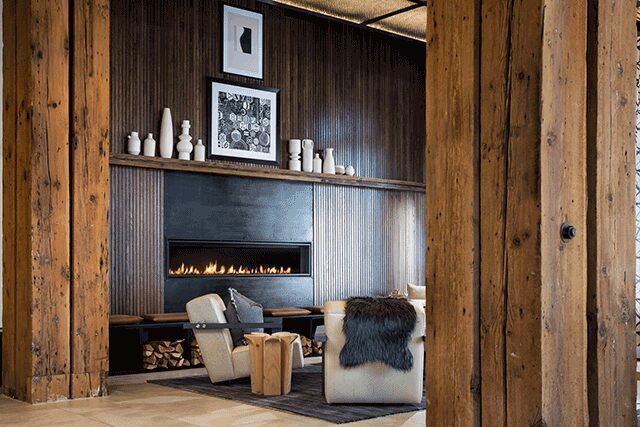The famed Waldorf Astoria New York is as integral to the fabric of Manhattan as the Empire State Building. As the city’s preeminent celebrity haunt, frequented by Marilyn Monroe and Frank Sinatra, it has set the blueprint for luxury hotels since it opened in 1931. As it undergoes a facelift from French designer Pierre-Yves Rochon and architect of record Skidmore, Owings & Merrill, targeting a 2021 completion date, it exemplifies Hilton’s evolution into a highly focused and agile hotel company deeply rooted in its past but with an eye toward the future.
As Hilton celebrates its centennial this year, much of its rapid yet thoughtful expansion can be credited to Larry Traxler. Since he joined the company in 2009 as senior vice president of global design, he’s overseen brand launches and refreshes that have transformed Hilton into a global powerhouse in nearly every segment.
From an early age, Traxler had a knack for drawing and was encouraged by his high-school art teacher to apply to the University of Cincinnati’s renowned architecture program. It was six years of 24/7 architecture immersion. “A lot of students called it archi-torture,” Traxler says. But he was a natural. His father was a mason, and “taught me how to repair a chimney when I was 12,” he says. “I was always working with my hands growing up.”
After graduating in 1990, Traxler moved to Chicago in the midst of a downturn when no one was hiring. A chance meeting with Jordan Mozer at the River Shannon, where Traxler was bartending, led to a seven-year stint with the designer. The duo would spend their days at bronze foundries and glassblowing studios, devoting as much time with artisans as they did to drawing. “It was my first experience working with storytelling before diving into design,” he explains.
From there, Traxler’s career took him to Singapore with HBA (where he fell in love with hospitality), New York with Ian Schrager (working with Philippe Starck, the Clift in San Francisco taught him how to think outside the confines of traditional hotel design), and Beverly Hills, California with Wilson Associates (leveraging the firm’s global appeal from offices in Dallas, Singapore, and New York).
It was with Hyatt where he got his first taste of the other side of the business. “What thrilled me about joining the brand side is the fact that we had some control,” he says. Traxler could set the tone of the design and assemble the players, but was still able to “conduct the music,” he explains. While there, he helped develop the Andaz brand, which set out to “dust the cobwebs off what the industry had become,” he says, by controversially getting rid of the front desk to cultivate organic social interactions in the hotel’s public spaces. Working alongside both Tony Chi on the Fifth Avenue location and David Rockwell on Wall Street, Traxler saw how a brand could be envisioned through two very distinct design lenses. Chi was unforgiving in respect to his design style, while Rockwell incorporated the theatricality that has now become the firm’s hallmark.
After four years, Traxler left Hyatt for Hilton, where he’s been for the past decade. At the time, the company had nine brands to its name with very siloed departments. Traxler went on a world tour, as he calls it, to assess what was working and what wasn’t. He helped to re-establish the core of each brand by reorganizing the business, shifting focus, and crafting swim lanes and individual mission statements.
Since then, Hilton’s portfolio has grown to 5,700 hotels under 17 brands (a new upscale lifestyle brand is expected to launch in the next six months). “A lot of people feel there are too many brands, but [most hotel companies] don’t understand segmentation or swim lanes,” he says. “In my role, I look at feasibility, renovations, and development opportunities, and I know when to tell developers that it’s not right for Hilton. We call that white space.”
Out of that white space came Hilton’s first lifestyle brand, Canopy, with each of its nine locations (37 are in the pipeline) rooted in a framework marked by a strong connection with the neighborhood. “We’re not trying to fit a square peg into a round hole with the existing brands, but we are trying to tap into those areas that were previously untapped,” he says. By contrast, the midscale Tru by Hilton (“an unmitigated home run,” he says, with 380 signed deals a year after it launched in 2016) is interesting in its rapid growth potential, attributed to a prototype build-out requirement. Meanwhile, soft brands like Curio, Tapestry, and the recently relaunched LXR “have taken the pressure off our flagship brands,” he says, by offering owners more design flexibility to create something unique.
He points to Motto, Hilton’s hostel-lite microhotel brand as having unlimited potential. Conceived in collaboration with Toronto-based DesignAgency, the brand can easily fit into a smaller footprint with lively F&B concepts on the ground floor and guestrooms that can seamlessly convert from social spaces to bedrooms that sleep up to six.
Traxler says Hilton’s next decade will focus on innovation. As guests demand change at an unprecedented pace, the industry standard seven-year renovation cycle is no longer feasible. From microburst refreshes to digital art programs, he’s expecting his team to provide solutions to guests’ fickle desires. In fact, he compares Hilton’s longevity as a successful hotel company to a well-tailored Armani suit. “You expect to hold onto it for a while, but you change your tie or the pocket square to show you can keep it fresh and relevant,” all without losing its classic appeal.

DLR Group refreshed a historic 1904-era building into the Canopy Minneapolis, preserving its Midwestern heritage at Umbra restaurant
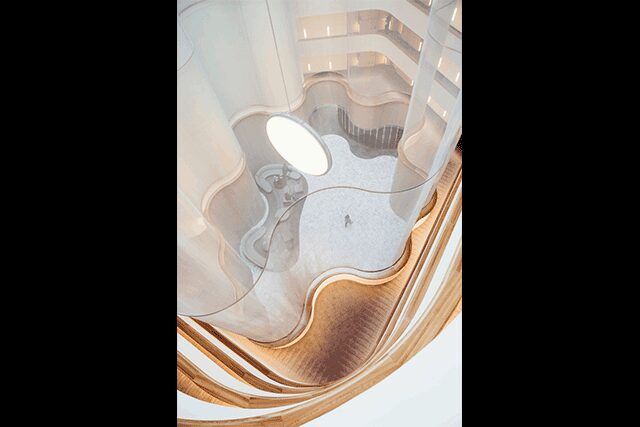
An undulating light fixture hangs in the lobby atrium at the Conrad Washington, DC, designed by Herzog & de Meuron, HKS, and Rottet Studio
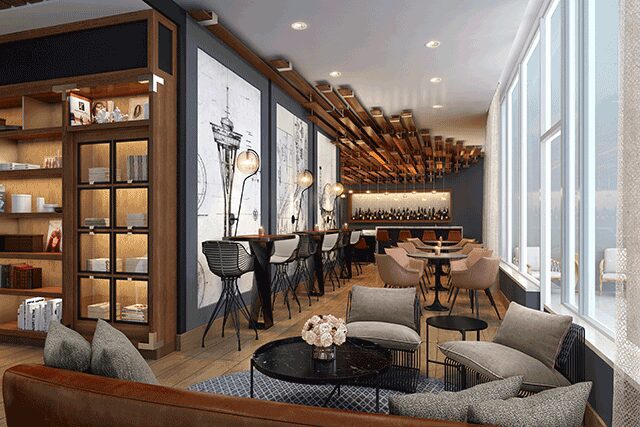
HBA infused the Sound Hotel Seattle Belltown with a classic Pacific Northwest color and material palette
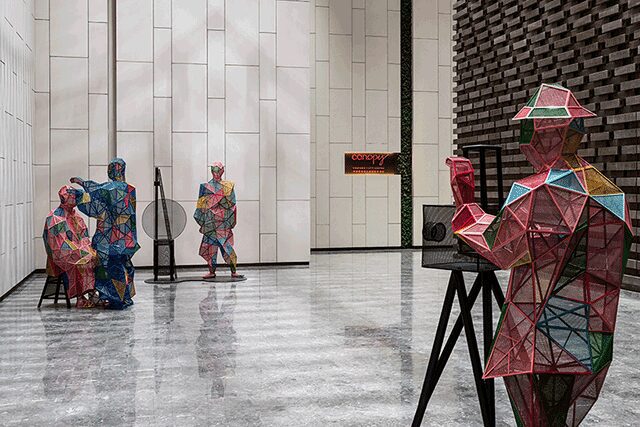
Playful installations welcome guests to the CCD-designed Hotel Canopy by Hilton Chengdu City Centre in China
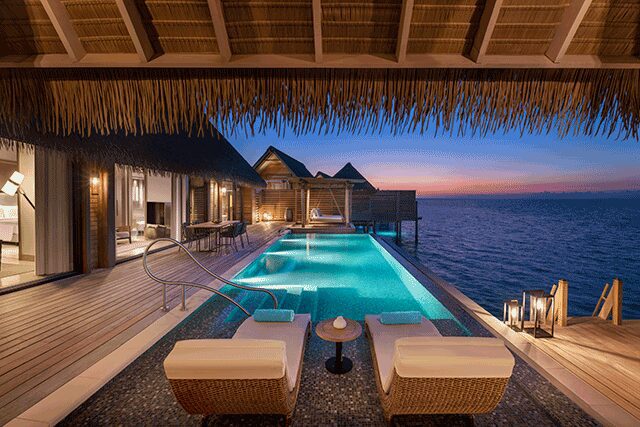
From Highness Engineering Consultants and Stickman Tribe, an overwater villa at the Waldorf Astoria Maldives Ithaafushi offers expansive ocean views


